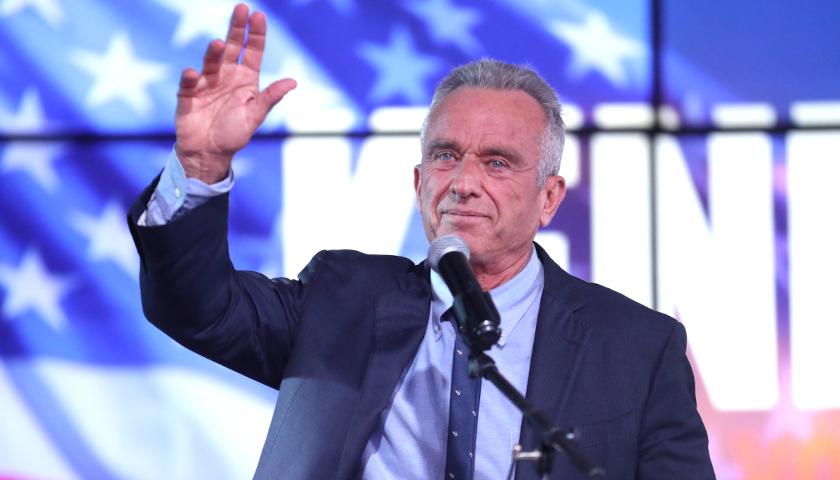by Reuven Brenner
The Labor Department’s official unemployment rate—the most well-known gauge of the labor market’s health—counts as unemployed only those who aren’t working but are actively seeking a job.
Yet there is very little that we can infer from the jobless rate about the health of the economy. The unavoidable conclusion is that the only reason investors follow the calculation is because both Washington’s politicians and the Federal Reserve are expected to react to it.
This is the arithmetic: Say the population is 200; Number of Employed, 92; Unemployed 8. So Labor Force participation is 50% and the unemployment rate, 8%. Now, say, 5 people drop out of the Labour Force, to 95, reducing labor force participation to 0.475 (95/200). What happens to the Unemployment Rate?
The answer depends on what the 5 people who withdrew from the Labor Force were doing before:
– If they were unemployed, then unemployment falls to 3, and the unemployment rate is 3.2%. Does this necessarily reflect a rosier future? Not necessarily. The facts are that 95 people in the society are working and they have to sustain the other 105, whereas before 100 did so. If these people went on welfare, disability, early retirement or even got student loans (as we do not know if they would complete their studies, or just get credentials backed by … nothing) – we really do not know if the 3.2% suggests higher standards of living down the line.
– Now say these 5 people dropped out of the labor force, and not from among the “army of unemployed.” Then, labor force participation drops to 95, the 8 unemployed continue to actively look for work – and so the unemployment rate increases to 8.4%. The fact remains, however, that 95 people work to sustain the other 105.
Briefly, the unemployment rate is rather unrevealing if we do not know details about who is dropping out; if there were new programs introduced or eliminated, thus changing incentives – as has been the case with many COVID-provoked benefits, if changing tax rates and regulations induce people to cease looking for jobs and are living from a variety of black markets or falsely claimed government benefits, etc. We also do not know if this society made investments abroad that are bringing in unexpected returns, positive or negative, implying that more than the domestic labor force is sustaining this society. But the Statistics Bureaus, in the U.S. and elsewhere do not provide such information – often for the simple reason that even if they had information on demography (that sometimes can change rapidly – Do we know how many illegal immigrants are there?), they wouldn’t know the certain meaning of the changes.
Consider the present. Though there was significant hiring with the easing of the COVID panic, as of October 10 weekly jobless claims totaled 326,000. These claims having been roughly stable since June. Continuing claims for unemployment fell to 2.71 million, a decline of 97,000. The total of those receiving benefits under all programs dropped to 4.17 million as some pandemic-related programs ran out (a year ago the number was a not-sustainable-for-long 25 million). Meanwhile the Federal Reserve of Dallas estimates that 2.6 million people retired during the COVID episode which, if in the ballpark, would suggest that labor force participation would stay roughly where it is now – at almost 62%; some 2 percent less than pre-COVID.
Do these numbers bode well? Who knows?
The facts are that the 62% of the potential labor force now working have to sustain not only the other 38%, but also the unemployed (which averaged around 5% between the mid 1970s and mid 1990s); implying some 57% percent of the population sustaining the other 43%. At 64 percent, the numbers would be, respectively, 36 percent and 59%.
Do these numbers signal much optimism? Not obvious. The fact that the demand for workers appears to be strong (at the end of July the Labor Department estimated job openings of 11 million) suggests that the economy is chugging along, but we don’t know much more. At most the numbers point to a significant mismatch between the talents companies would want to hire, and what the people in the labor force offer. We don’t know why individuals are re-entering the labor force (good pay, insufficient savings?), why people are or aren’t retiring (lack of trust in Social Security, or pension funds?), and why young people are or are not sidelined. It’s all a reminder that it would be a grave mistake to debate and focus policies on what might be domestic “full employment” now, because we must be skeptical about what that number what might be, and what today’s numbers reflect.
The fact that investors react to these numbers does not imply that they know more, but more that they anticipate how Washington and the Fed might react to these numbers – never mind if they do not share the models and jargons that politicians and the Fed rely on.
The best thing would be to ask Washington and the Fed to find answers to the above problems, and come up with scenarios showing their assumptions about what policies they can pursue if the lower labor force participation would be long-lasting; if the mismatch in the domestic labor force would be long lasting; and what returns they are assuming when capital and diverse talents are matched within the U.S. to be able to pay the bills over a longer horizon than a few months. For now, jobless numbers arguably obscure more than they illuminate.
– – –
Reuven Brenner is governor at IEDM, and on the Editorial Board of American Affairs. The article draws on his books, Labyrinths of Prosperity, Force of Finance, A World of Chance.
Photo “Unemployment Line” by freestocks-photos.






My company had to file bankruptcy b/c of the Covid19 mandatory shutdown from Lee. I lost everything including health insurance. I will never forgive these people for tearing peoples lives apart.
The fictional unemployment rate calculation was gerrymandered many years ago to make the government look good. So many such measurement – take the rate of inflation, for example – do not come close to honestly representing what is really happening. It works only because most people do not understand the dishonest methodology being used. They trust the government – at all levels – to be honest when that is no where near true. Heck, my school district cooks the books (legally but unethically) to ensure a steady increase of funding year after year.
I’ve been wondering how long it’s going to take to see the mythical “jobs saved” numbers to reappear. Remember that, folks? Make believe Obama mathematics to help calculate the unemployment rate.